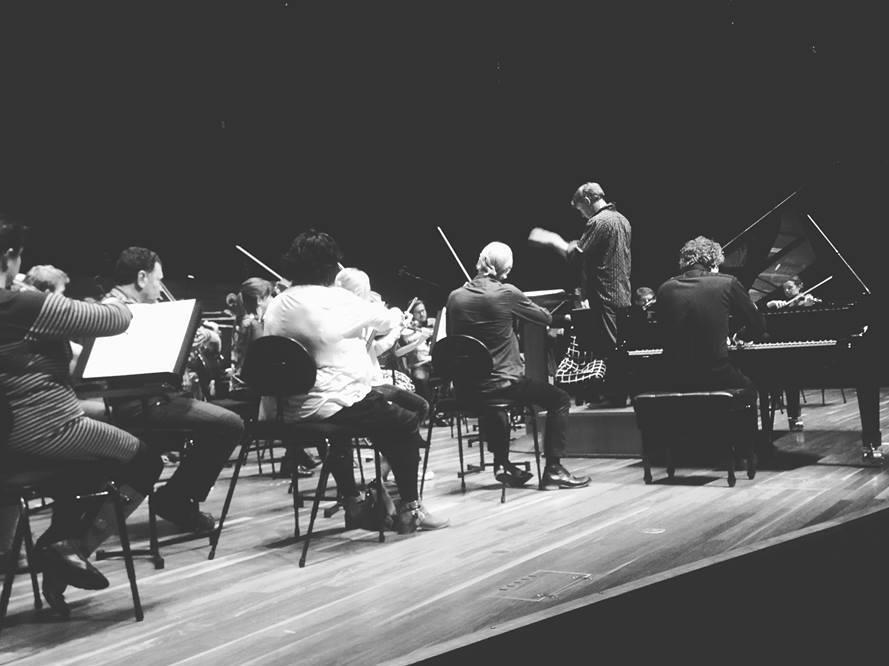Douglas Boyd, Paul Lewis and the Orchestra are in the final rehearsal for Beethoven Festival. Photograph via Melbourne Symphony Orchestra.
The second instalment of four concerts comprising the current Beethoven Festival presented by the Melbourne Symphony Orchestra presented Webern’s exquisite Five Movements for string orchestra, Op 5 (1909/1928) book-ended by Beethoven’s second piano concerto Op 19 (1787-89) and third, Op 37 (1800).
The second piano concerto – actually the first but published second – served as a show piece for the young composer introducing his pianistic skills having moved to Vienna from Bonn. He later acknowledged that it didn’t represent his finest work but it certainly provided a vehicle for him to demonstrate his dazzling virtuosity and improvisatory abilities. The sunny optimism and generous spirit of its first movement (Allegro con brio) was splendidly conveyed by Paul Lewis, the soloist for all five concertos throughout this festival. However, Lewis’s neat precision and clear delineation of voices was sadly unmatched by the orchestra that had difficulty starting chords together. The fragile decoration of the theme by the soloist in the Adagio delighted though I wasn’t entirely persuaded by the full pedalling of the recitative-like conclusion. The mischievously playful Rondo, molto Allegro was highly entertaining.
A criticism of the output of Anton von Webern is that it is all maths and symmetry and little else. One of the mysteries of music for this listener, however, is that no matter how much one may learn about a work, its success depends upon how it affects you, something more than logic alone. Webern’s crystalline Five Movements for string quartet, Op 5 was composed in 1909 and later rewritten for string orchestra in 1928. Each and every note serves to carry meaning in this work. Part of the joy of listening to it is its almost shocking succinctness; its five movements span just eleven minutes and this includes two marked ‘very slow’. For reasons I cannot explain for it cannot be explained in analysis, I admit to feeling absolute elation hearing this music, particularly when performed so well as it was on this occasion. The third movement (Sehr bewegt) was repeated as an encore.
Eleven years separates Beethoven’s second piano concerto from the third and the latter work shows significant maturity by the composer. Marked by a confidence in technique and breadth of expressivity, it was published under the title ‘Grand Concerto’, its grandeur is plain from the outset. Lewis’s performance was vivid and true, giving plenty of room for introspection and stillness. The performance drew a strongly positive response from the audience, many in the hall standing.
Paul Lewis was returned to the stage to perform as an encore the second of Arnold Schoenberg’s Six Little Pieces for piano, Op 19 (Langsam) composed in 1911.
Rating: 4 stars out of 5
Beethoven Festival – Piano Concertos Nos 2 & 3
Melbourne Symphony Orchestra
Douglas Boyd, conductor
Paul Lewis, piano
Hamer Hall, Melbourne Arts Centre
10 September 2016





